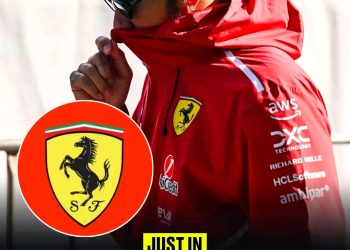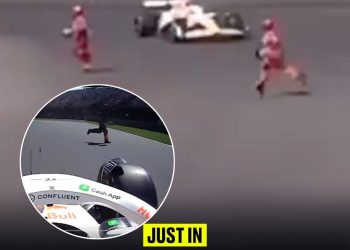Oscar Piastri’s once-iron grip on the championship has loosened, and the Australian prodigy now finds himself chasing teammate Lando Norris in a title fight that’s turned psychological as much as mechanical. Heading into Mexico, Piastri admitted that leading the standings was always the preferred position — “it means you’re doing something right,” he noted. But as the chequered flag fell in Mexico City, it was Norris basking in that symbolic spotlight. Over the course of the grueling 24-race campaign, Norris has found his stride precisely when it matters most, proving to be both faster and calmer under the intensifying mental weight of a world championship battle.
The McLaren duel has tilted sharply since the mid-season break. Norris has outperformed Piastri in four of the last six races, snatching equal footing in qualifying head-to-heads and establishing dominance in race results. His Mexico triumph wasn’t merely a victory—it was an annihilation. The Brit’s 30-second winning margin, achieved through unflinching control from pole to flag, was the largest of the season and a testament to his seamless synergy with the car. Piastri, on the other hand, fought through traffic and struggled with grip, finishing a colossal 42 seconds behind. The Australian could only concede that Norris had adapted faster to the car’s subtle behavioral shifts, while he was still “trying to learn” how to drive around its evolving demands.
Piastri’s own explanation for his dip in form offered a rare glimpse of vulnerability. He admitted that “major changes” in driving technique were needed to regain competitiveness, especially on low-grip surfaces where Norris has excelled. McLaren boss Andrea Stella pinpointed these conditions as Piastri’s Achilles heel — a parallel to the pattern observed earlier in Montreal, where Piastri also failed to podium. Despite his self-awareness and determination to “add tools to the toolbox,” the difference in adaptability between the two McLaren drivers is becoming increasingly visible. Yet the Australian remains optimistic, believing the upcoming rounds in Brazil, Qatar, and Abu Dhabi — all on more conventional tracks — could help him rebound.
Meanwhile, the Red Bull camp is battling its own crisis of form. Max Verstappen, though still within 36 points of the lead, salvaged a respectable third place on a weekend where Red Bull’s cooling issues and lack of aerodynamic grip were brutally exposed by Mexico’s altitude. The Dutchman’s relentless precision allowed him to minimize damage, keeping his faint title hopes alive. Yet the sight of a McLaren effortlessly dominating a track once considered Red Bull territory hints at a deeper, perhaps structural, shift in the power balance at the top of Formula One.
Elsewhere, Yuki Tsunoda’s struggles continued as another point-less weekend left his F1 future hanging by a thread, while rookie Oliver Bearman delivered the drive of his young career — a calm and composed P4 that elevated both himself and Haas in the standings. The night ended with pundits debating FIA’s cautious late-race Virtual Safety Car call, but beneath the controversy, one truth rang clear: the grid is reshaping before our eyes. McLaren has momentum, Norris has composure, and Piastri now faces the defining test of his young career — not to chase speed, but to rediscover himself.










